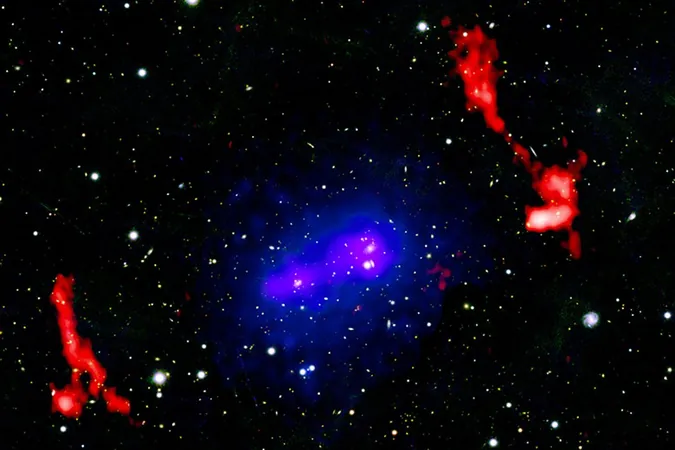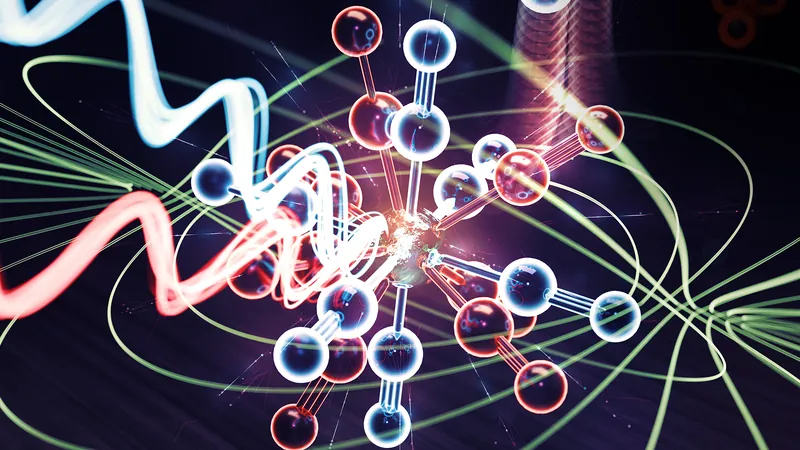
Galactic Showdown: Two Clusters Collide and Prepare for Round Two!
2025-06-06
Author: Charlotte
A Cosmic Collision Beyond Imagination
Get ready for an astronomical spectacle! Two colossal galaxy clusters, a staggering 2.8 billion light-years from Earth, have not only collided but are on the brink of another dramatic encounter. Astronomers are thrilled to have a front-row seat to this celestial clash!
The Mighty Giants
The galaxy clusters, known as PSZ2 G181.06+48.47 (or simply PSZ2 G181), are packed with hundreds to thousands of galaxies, vast amounts of dark matter, and swirling superheated gas. Their first cosmic collision was a spectacular event, and now, they are gearing up for a rematch!
Unveiling the Aftermath
Using NASA’s Chandra X-ray Observatory, ESA’s XMM-Newton, and other advanced observatories, astronomers have captured stunning images that reveal the aftermath of the initial encounter and the early signs of an impending second clash.
Shockwaves Through the Cosmos
A breathtaking composite image from this multi-observatory study showcases crescent-shaped structures enveloping the system. These structures likely represent shock fronts—massive disturbances akin to sonic booms—formed by the high-speed impact during their first collision nearly a billion years ago.
Heavenly Distances
With a separation of 11 million light-years—meaning it takes light that long to bridge the gap—these shock fronts hold the record as the largest ever observed from a galaxy cluster collision. Despite this monumental distance, the clusters remain gravitationally bound and are inching back toward each other for another high-speed impact.
An Imminent Second Crash!
Thanks to the x-ray vision capabilities of Chandra and XMM-Newton, the future of PSZ2 G181 is becoming clearer. Researchers have pinpointed three distinct shock fronts aligned with the clusters’ trajectory, indicating that after slowing from their initial encounter, they are now falling back toward one another, setting the stage for a second epic crash.
New Insights Await
According to lead author Andra Stroe from the Center for Astrophysics | Harvard & Smithsonian, this upcoming event provides a unique opportunity to study a lower-mass system in a scenario typically observed in more massive clusters, paving the way for groundbreaking discoveries.
Why This Matters
Galaxy cluster collisions are among the universe's most energetic phenomena. They not only shape cosmic structures but also offer invaluable insights into the elusive dark matter and the processes of galaxy evolution. The PSZ2 G181 collision presents a fresh perspective, allowing scientists to explore these monumental events under varied conditions.
Buckle Up for Cosmic Revelations!
As these titanic structures embark on their second collision, the astronomical community eagerly anticipates the revelations that will emerge from one of the universe's most violent yet fascinating phenomena.









 Brasil (PT)
Brasil (PT)
 Canada (EN)
Canada (EN)
 Chile (ES)
Chile (ES)
 Česko (CS)
Česko (CS)
 대한민국 (KO)
대한민국 (KO)
 España (ES)
España (ES)
 France (FR)
France (FR)
 Hong Kong (EN)
Hong Kong (EN)
 Italia (IT)
Italia (IT)
 日本 (JA)
日本 (JA)
 Magyarország (HU)
Magyarország (HU)
 Norge (NO)
Norge (NO)
 Polska (PL)
Polska (PL)
 Schweiz (DE)
Schweiz (DE)
 Singapore (EN)
Singapore (EN)
 Sverige (SV)
Sverige (SV)
 Suomi (FI)
Suomi (FI)
 Türkiye (TR)
Türkiye (TR)
 الإمارات العربية المتحدة (AR)
الإمارات العربية المتحدة (AR)